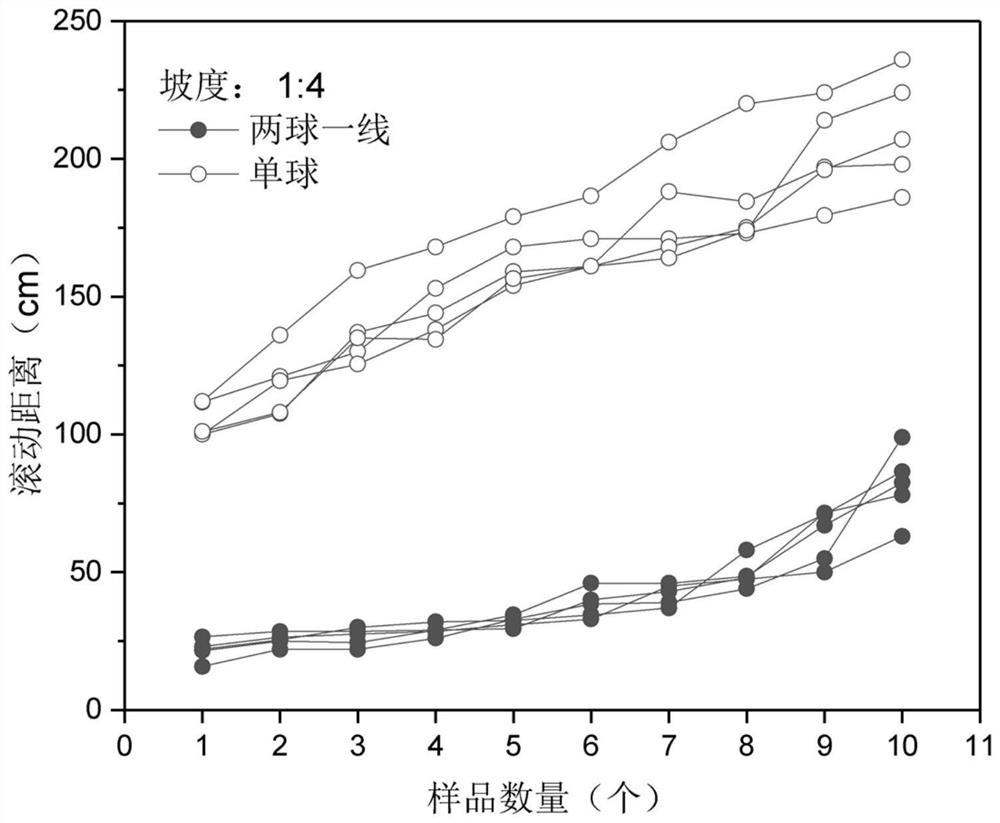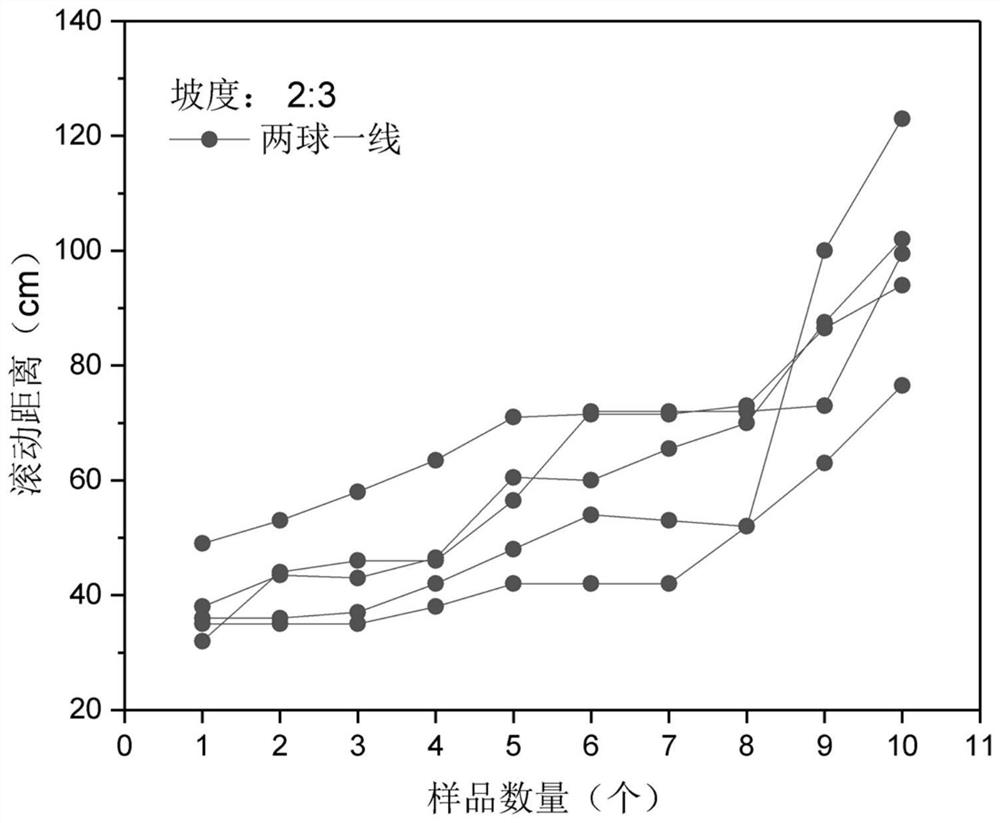Connection type temperature control cell coating inhibition ball used for forest and grassland fire prevention and use method
A connected and aftercoat technology, which is applied in fire prevention equipment, fire rescue, etc., can solve problems such as environmental pollution, few forests and grasslands, and limited use of flame retardant materials, so as to achieve no harm to production users and the environment, and ensure the fire extinguishing effect Effect
- Summary
- Abstract
- Description
- Claims
- Application Information
AI Technical Summary
Problems solved by technology
Method used
Image
Examples
Embodiment 1
[0030] Two balls and one line: Two temperature-controlled aftercoat balls are connected by an aramid thread, and the throwing experiment is carried out on a slope of 1:4. The slope is smooth and the ground is smooth. The specific experimental method is as follows:
[0031] 1) Cut glass fiber threads of suitable length. Aramid threads have low water absorption and low shrinkage rate. In order to make the connection stronger, put the two ends of them into two spherical moulds;
[0032] 2) Prepare 20% calcium chloride solution, drop it into the mold containing the aramid thread with a plastic dropper, and then put it into the refrigerator or liquid nitrogen to freeze;
[0033] 3) Weigh the temperature-controlled cell coat material in a corresponding proportion and put it into a beaker, and put the beaker into a constant temperature water bath with a temperature of 80°C to heat and melt;
[0034] 4) The frozen ice balls in 2) are connected in pairs) and wrapped with molten shell ...
Embodiment 2
[0037] Two balls and one line: Two temperature-controlled aftercoat balls are connected by an aramid thread, and the throwing experiment is carried out on a slope of 2:3. The slope is smooth and the ground is smooth. The specific experimental method is as follows:
[0038] 1) Cut glass fiber threads of suitable length. Aramid threads have low water absorption and low shrinkage rate. In order to make the connection stronger, put the two ends of them into two spherical moulds;
[0039] 2) Prepare 20% calcium chloride solution, drop it into the mold containing the aramid thread with a plastic dropper, and then put it into the refrigerator or liquid nitrogen to freeze;
[0040] 3) Weigh the temperature-controlled cell coat material in a corresponding proportion and put it into a beaker, and put the beaker into a constant temperature water bath with a temperature of 80°C to heat and melt;
[0041] 4) The frozen ice balls in 2) are connected in pairs) and wrapped with molten shell ...
Embodiment 3
[0044] Two balls and one line: Two temperature-controlled aftercoat balls are connected by an aramid thread, and the tossing experiment is carried out on an outdoor grass field with complex terrain. The specific experimental method is as follows:
[0045] 1) Cut glass fiber threads of suitable length. Aramid threads have low water absorption and low shrinkage rate. In order to make the connection stronger, put the two ends of them into two spherical moulds;
[0046] 2) Prepare 20% calcium chloride solution, drop it into the mold containing the aramid thread with a plastic dropper, and then put it into the refrigerator or liquid nitrogen to freeze;
[0047] 3) Weigh the temperature-controlled cell coat material in a corresponding proportion and put it into a beaker, and put the beaker into a constant temperature water bath with a temperature of 80°C to heat and melt;
[0048] 4) The frozen ice balls in 2) are connected in pairs) and wrapped with molten shell material, and wait...
PUM
 Login to View More
Login to View More Abstract
Description
Claims
Application Information
 Login to View More
Login to View More - R&D
- Intellectual Property
- Life Sciences
- Materials
- Tech Scout
- Unparalleled Data Quality
- Higher Quality Content
- 60% Fewer Hallucinations
Browse by: Latest US Patents, China's latest patents, Technical Efficacy Thesaurus, Application Domain, Technology Topic, Popular Technical Reports.
© 2025 PatSnap. All rights reserved.Legal|Privacy policy|Modern Slavery Act Transparency Statement|Sitemap|About US| Contact US: help@patsnap.com



